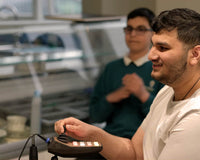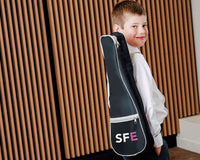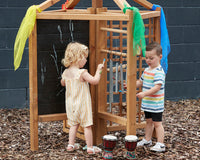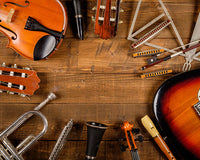When thinking of a trumpet most people will have this image in mind, the
standard Bb model, which is the most commonly used throughout the world. However, the trumpet family includes a number of variants to the standard model. These are used in different ensembles / compositions. Let's take a quick look at the most popular ones.
As already stated, this is what we usually refer to when talking about a trumpet.
The Trumpet is a very versatile member of the brass family used in many ensembles including
Orchestras,
Concert/Wind Bands,
Swing/Jazz Bands. It commonly known as the
'Horn section' for many mainstream pop groups. It is worth pointing out though that it is not used in Brass Bands where
cornets are preferred due to their conical bore which gives a warmer sound. (You can learn more about the
difference between trumpets and cornets in one of my previous blogs) It has
3 valves which allow the player to produce a
full chromatic scale. One of the first works to use this chromatic model, was Joseph
Haydn's Trumpet Concerto.
http://www.youtube.com/watch?v=wumIxWhqt-k
The
Piccolo trumpet is the smallest (shortest) of the trumpet family and pitched
one octave higher than the standard Bb. This higher natural pitch makes it easier to play further up the scale. This extends the playable range beyond what is comfortably achievable on a Bb instrument. It has
4 valves - compared to the usual 3- which helps with tuning/intonation. They are also supplied with an
alternative leadpipe to change the pitch to A if preferred. Piccolo trumpets are generally used in
Orchestral works, predominantly
Baroque. However, you will hear them in a number of more popular settings and it was famously used in the Beatle's song
'Penny Lane'.
(Skip to around 2:30 if you want to get straight to the trumpet action.)
http://www.youtube.com/watch?v=L2OvmvA_7Mg
Another
'High Trumpet' the
Eb/D (as the name implies) can be pitched in
Eb or D depending on which tubing configuration you use. A little lower in pitch (longer) than the piccolo and has just the
3 valves like the standard Bb. Trumpet players are generally well practised in transposition and often use the Eb/D to provide
better clarity and lyrical quality of their sound. It also offers better intonation compared to attempting the higher notes on a standard Bb instrument.
C Trumpets
C Trumpets aren't as popular in the UK as in the USA. Generally they are only used for Orchestral / Chamber works. Pitched a tone above the Bb, many claim that it has a
slightly 'brighter' sound than the standard Bb . It is, in my opinion,
difficult to justify the investment in a C trumpet (which aren't cheap if you want a good one!) when it is not likely to be used that often. I would advise any advancing player to invest in an Eb/D or a Piccolo first if they are looking to expand their trumpet collection.
The pocket trumpet is more of a novelty instrument but can also be used for practising when away from home as it doesn't take up much space. It is essentially a
standard length Bb trumpet with the tubing wrapped more tightly. I've seen it used in entertainment competitions and other such 'fun' performances but don't really class it as a serious instrument. Some people think it's good for smaller children who can't physically manage a trumpet, but in this situation I'd always recommend starting with a Cornet.
 Slide Trumpets
Slide Trumpets
Another
novelty instrument rather than a serious option for beginners but again can be fun. Sometimes called a
'Mini Trombone' for obvious reasons. Like the pocket trumpet it is the
same length as a standard Bb but as it has
no valves.
Other Trumpets
There are a number of other weird and wonderful trumpets out there from
Military Fanfare trumpets, high trumpets in G, F & C down to
Bass trumpets. There are also many models produced with
Rotary Valves which are particularly popular in the European market.) Those discussed above are the ones you are most likely to see being played in Esembles in the UK.
The instrument with the
highest register in the brass family has been around
since 1500BC. It is still manufactured in many shapes and sizes and will no doubt continue to feature for centuries to come.

 Slide Trumpets
Slide Trumpets




















